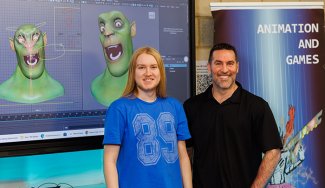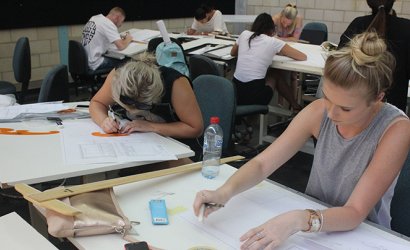

Why choose this course?
Further enhance your animation and digital art skills to elevate your career in this exciting industry. This course will provide you with high-end practical skills in concept art, 3-D modelling, animation and special effects.
During your studies you will develop creative abilities in concept art and visual development, cinematography, 2-D and 3-D character animation and short film production using the latest software and equipment such as Autodesk Maya, Unreal Engine, ZBrush, Toon Boom Harmony, Blackmagic Design Fusion and Da Vinci Resolve, Adobe Substance Painter, Adobe Photoshop, Premier Pro and After Effects.
You will benefit from strong industry connections and will have the opportunity to showcase your work at an end of year expo.
Career opportunities
- 3D Modeller
- Animator
- Game and Multimedia Developer
When choosing a course, it's important to think about the key skills and knowledge you'll need, as well as how you'll be assessed. Take a look at this information and consider if you might face any challenges in meeting the course expectations and requirements.
- Computer skills - familiarity with using a computer navigating advanced animation software and troubleshooting
- Artistic skills - some experience with drawing, sketching, or digital art
- Imagination and creativity - a strong sense of creativity and the ability to think outside the box
- Storytelling - an interest in storytelling and narrative/character development
- Problem-solving - the ability to tackle challenges, discuss ideas with others, and come up with solutions
- Teamwork - a willingness to collaborate with others and work in a team environment to improve work practices
- Communication - the ability to present and articulate ideas and give and receive feedback
- Planning and organisation - the ability to plan a range of routine tasks and achieves goals efficiently
- Passion for animation - a genuine interest in animation (2D/3D modelling), CGI, and game development
- Attention to detail - careful attention to detail to ensure high-quality work
- Persistence and patience - the ability to stay motivated and patient through complex projects and learning curves
-
An IELTS score (academic) of 6.0 with no band score less than 5.0 or equivalent.
-
Completion of CUA51020 Diploma of Screen and Media [Animation & Game Art] (AC83) is required for entry into this course.
There may be further semester intakes available for enrolment. You can view any further intakes when you submit your online application(opens in a new tab).
For information about pathways from TAFE to university, view our Pathways to university page.
How to apply
Apply to study at TAFE in six steps:
- find a course;
- check entry requirements;
- submit an application;
- accept your offer and pay;
- apply for your student visa; and
- receive your visa and come to Australia for your studies.
TIWA Course Guide
A guide to studying at TAFE in Western Australia, including study options, facilities and campus locations!
Download study area guide(opens in a new tab)
Contact us(opens in a new tab)
TAFE International Western Australia (TIWA) is the Registered Training Organisation (RTO) and Commonwealth Register of Institutions and Courses for Overseas Students (CRICOS) provider, for the delivery of training to international students, enrolled in a TAFE course in Western Australia. This nationally recognised course is delivered by a Western Australian TAFE college on TIWA's behalf. TIWA retains responsibility for the quality of the training and assessment delivered by the TAFE colleges and for the issue of certification documentation to students.


